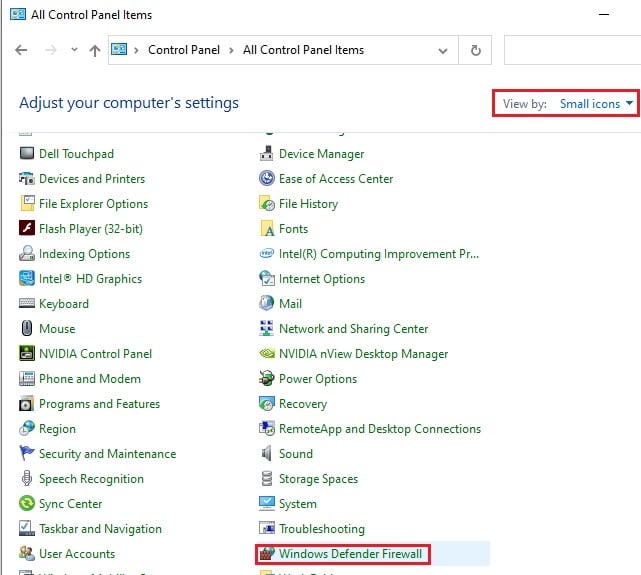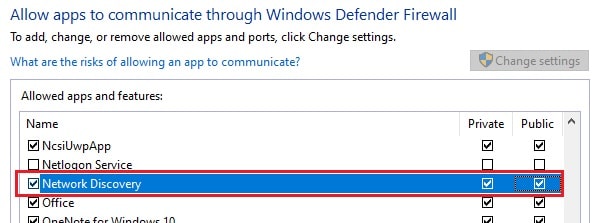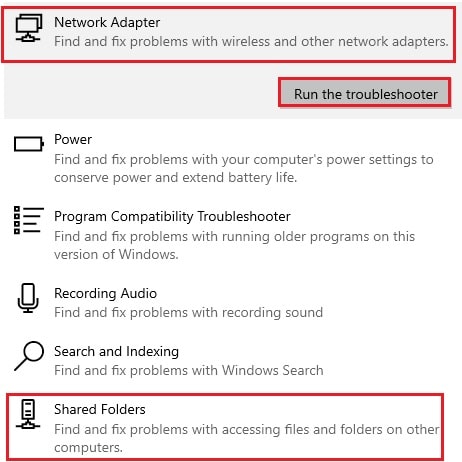Users would often find themselves in a situation where they try to enable their computer’s network discovery but are unable to. Either the option is grayed out, or they allow their computers to be discoverable, but return to find the settings automatically reverted to disabled.
This article discusses what network discovery is, why it is used and how users can troubleshoot it to work.
Table of Contents
What is network discovery?
Network Discovery is a feature in Windows 10 that allows its users to discover other devices on the same network which have this feature enabled. It is primarily used to share files and folders between various devices on the network. It can also be used to share a locally-attached printer to run errands of other computers on the network.
When enabled, this feature makes the IP address and other information public on the network. Hence, anyone on the same network could access the files and folders on the computer. However, the permission to each file and folder on the computer can be customized separately, thanks to the Permissions settings in their Properties.
Users have reported this method to be most convenient to use when sharing information over the same network. People do not have to send out an attachment via email each time they wish to share something with their colleagues.
How to fix “Network discovery is turned off” error
Users often complain that even though the discovery is turned on from their settings, it is still prompted by the error which states that it is still off. This is because network discovery is not enabled through one feature, but needs to be allowed through multiple platforms for the computer to be discoverable by other devices.
Moreover, it can also prompt errors if the relevant services are not running, or the Windows Firewall is not allowing the network discovery.
Let’s see what can be done to get rid of the error so that Windows 10 users can easily share data.
Restart the computer
Certain services often malfunction and need to be rebooted. Restarting the computer ensures a fresh start to the services as well as the features involved. Therefore, the basic step towards a resolution is a system reboot, then check to see if the problem is resolved.
Choose the right sharing mode
Windows 10 offers two different profiles to be used for the networks. One is a Private profile and the other is a Public profile.
How to switch between network profiles in Windows 10
These profiles discriminate between the type of settings the user should have and the respective security levels. For example, the security level is automatically enhanced when the user sets their profile as Public, to reduce the chances of data breaches.
Meanwhile, private networks are safer as they usually have trusted, and relatively lesser number of users.
- Click on the WiFi icon in the bottom-right corner of the Taskbar.
- Click on Properties under the network your device is connected to.

- Under the Network Profile, select Private.

- Now click the back arrow on the top-left corner of the page. This will take you to the Network Settings.
- On the left, click on Status, then click on Network and Sharing center on the right.

- In the Network and Sharing Center windows, click on Change advanced sharing settings on the left.

- In the Advanced Sharing Settings window, drop-down the Private tab, and then select Turn on Network Discovery. Also, check the box next to Turn on automatic setup of network connected devices.

- Now click on Save changes to implement the changes made.
Check if the issue has been resolved. Continue through the thread below for further solutions.
Start dependency services
The services required to enable network discovery need to be run in order for the devices to be accessible by other computers. Follow the steps below to ensure that all relevant services are up and running.
- Open the Services menu by entering Services.msc in Run.
- Configure the following 4 services with the same settings as described below:
- UPnP Device Host
- Function Discovery Resource Publication
- SSDP Discovery
- DNS Client
- Right-click on the service and click on Properties in the Context Menu.

- Under the General tab, from the Startup type drop-down menu, select Automatic. Then click on Start.

- Click on Apply and Ok to enforce the changes made.
- Repeat the steps for the services mentioned above.
- Reboot the computer when done.
The tasks performed here will ensure that all the services automatically start so that the users do not have to manually start each of them every time they wish to enable network discovery.
Configure the Windows Firewall
To ensure that network discovery is allowed through the Windows Firewall, head to the control panel with the following:
- Go to Run –> control. This will open the Control Panel.
- Switch the View by mode to small icons, and then click on Windows Defender Firewall.

- On the left side, click on Allow an app or feature through Windows Defender Firewall.

- Under the Allowed apps and features, scroll down to Network Discovery and check the box to its left. Then check the boxes under Private and Public as well, which are to the right. Click Ok when done.

Note: If the list of features is grayed out, then click on Change Settings on the top-right and enter the Administrator’s credentials, or login from the Administrator account and perform the task. - Restart the computer once done.
Check if the issue has been resolved. If not, continue to the next step.
Run network troubleshooter
Thanks to Microsoft, Windows 10 comes with a built-in troubleshooter for the day-to-day problems which the users encounter.
- Go to the Start Menu and click on the Settings (Gear) Icon.
- Then click on Update & Security.
- On the left side, click on Troubleshoot, and then click on Additional troubleshooters on the right side.

- Scroll down and click on Network adapter, and then click Run the troubleshooter.
- A new window will popup running the troubleshooter. Go through the wizard and fix the recommended settings as suggested by the troubleshooter.
- When done, run the troubleshooter for Shared Folders as performed in steps 4 and 5.

Any anticipated errors detected by the troubleshooter should now be fixed. Check to see if the error persists.
Reset the network stack
Another method to fix the error, if all configuration is done correctly, is through resetting the network stack. Resetting the network stack means quickly removing and reinstalling the network adapters while removing any cached settings. Before proceeding, it is recommended to backup any network configuration as all are reset to default settings.
Open up Command Prompt by typing in cmd in Run.
Enter the following commands one by one, in the same order:
ipconfig /releaseipconfig /flushdnsipconfig /renewnetsh int ip resetnetsh winsock reset
Once all commands are executed, restart the computer and the error should now be resolved.
Depending upon the circumstances of the user, sometimes all of the above tasks need to be performed (in the same order) to make the network discovery work. However, either one of the methods listed could also work for a user, if they encounter an error because of the relative setting.
At what point during the process was your error eliminated?



